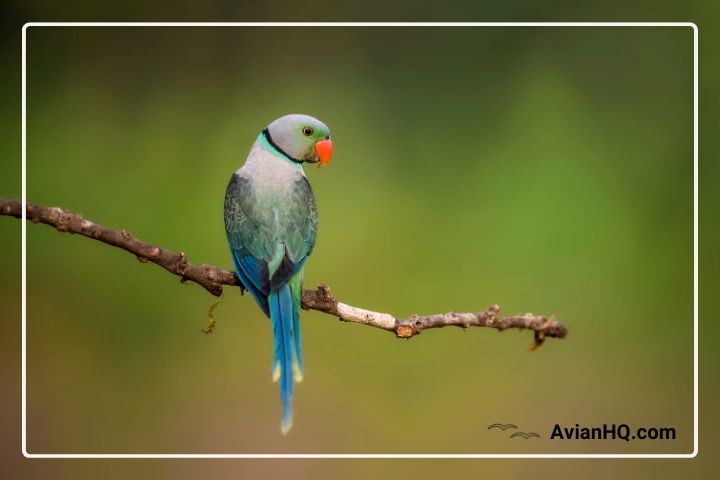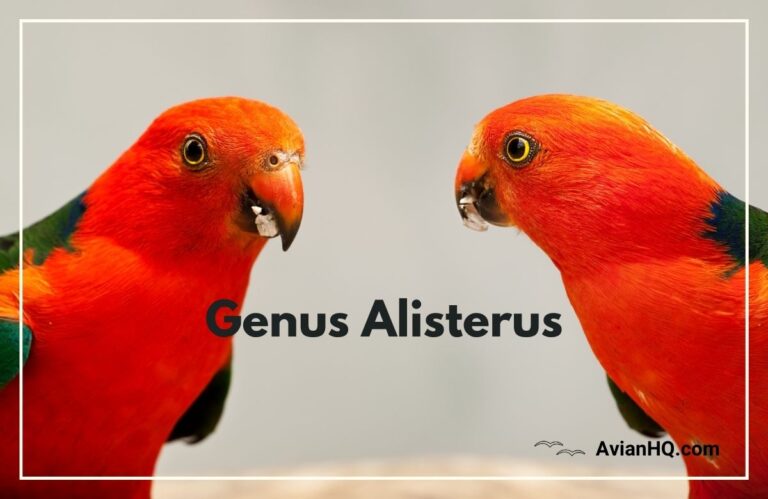An In-Depth Look at the Diverse Parrots of Genus Psittacula
Vibrant green plumage, hooked beaks, and squawky voices—parrots are some of the most recognizable birds. Among the many parrot genera, Psittacula stands out for its diversity. The 60+ species display a stunning array of shapes, sizes, and colors.
You’ll find these charismatic parrots scattered across the tropics of Africa and Asia. Some species have adapted to thrive near humans. The Rose-ringed Parakeet is now one of the most widespread parrots thanks to introduced populations across the world. Others, like the Derbyan Parakeet, are endangered and struggle to survive amid habitat loss.
In this guide, you’ll uncover what makes these parrots unique. We’ll tour their range, anatomy, ecology and more. You’ll also learn identification tips to tell apart the Ring-necked from the Blossom-headed Parakeet.
Get ready to meet these intelligent, social parrots and better appreciate the diversity within the Psittacula genus!
The Origins and Defining Traits of the Psittacula Parrots
The name “Psittacula” originated from the Latin word for parrot. It was coined by French zoologist Mathurin Jacques Brisson in 1760. Since then, ornithologists have further refined the genus by analyzing anatomy, behavior, genetics, and more. These parrots share common traits that set them apart from other parrot groups.
While Psittacula parrots vary widely, most have slender bodies, long tapered tails, and rounded wings. Their beaks pack a punch for cracking hard nuts and seeds. You’ll notice a distinctive curved shape with a sharp upper mandible that overhangs the lower.
Many parrots in this genus display colorful plumage, like the red rump and green wings of the Blossom-headed Parakeet. However, some have more subdued grays and greens for camouflage. Psittacula parrots are medium-sized, ranging from 7 inches to over 2 feet in length.
Intelligence and social bonds define these birds. Complex flock behaviors help the parrots forage, roost, and raise young together. Some species have adapted to thrive near humans. But habitat loss threatens the survival of endangered Psittacula species like the Echo Parakeet.
Exploring the Diverse Home Ranges of Psittacula Parrots
Psittacula parrots live across the tropical and subtropical zones of Asia and Africa. You’ll encounter them in forests, woodlands, cities, and more. Understanding their distribution helps explain the evolution of different species.
East Africa serves as the ancestral home for many Psittacula parrots. Populations centered in the Congo Basin rainforest diverged and spread outward over millions of years. Some, like the endangered Timneh Parrot, remain isolated in small pockets of West Africa.
Others flew across the Indian Ocean. On islands like Mauritius, unique species like the extinct Newton’s Parakeet evolved in separation. Asian species colonized tropical areas from the Himalayas to Indonesia by island hopping and dispersing along forest corridors.
Today, native Psittacula parrots inhabit diverse habitats. The Slaty-headed Parakeet thrives in the canopy of Southeast Asian rainforests. You’ll find the grey Enderby Island Parakeet roosting among scattered trees and coastal cliffs on a remote island of the Auckland Islands archipelago south of New Zealand.
Unfortunately, some species now cling to fragmented remnants of habitat due to extensive deforestation. But a few, like the highly invasive Rose-ringed Parakeet, have adapted remarkably well to living alongside humans.
Protecting Endangered Psittacula Parrots for the Future
While some Psittacula parrots thrive, others face grave threats. Habitat loss, trapping, competition, and disease imperil vulnerable species. But it’s not too late to prevent extinctions through thoughtful conservation initiatives.
Deforestation represents the foremost threat across Asia and Africa. Logging and land clearing destroys the forest ecosystems Psittacula parrots rely on. The intensification of agriculture also reduces available habitat. Without safe places to nest and forage, populations decline.
The pet trade takes a heavy toll on wild parrots through trapping. Species like the Derbyan Parakeet are especially prized for their bright plumage. Trapped adults often die before reaching markets. This worsens the pressure on endangered populations.
Invasive species pose another difficulty. When species like the Rose-ringed Parakeet establish themselves outside native ranges, they compete with native birds. Disease transmission from introduced to native parrots also raises concerns.
While the situation is urgent, all hope is not lost. Reserve networks help protect parrots and their habitats. Captive breeding programs reinforce wild populations of endangered species. Ecotourism and community engagement also fund conservation efforts. But continued action is critical for the survival of Psittacula parrots.
Spotting the Subtle Differences: Identification Tips for Psittacula Parrots
With over 60 species spanning two continents, telling apart Psittacula parrots takes a keen eye. But looking closely at field marks like plumage patterns, beak shape, and size reveals clues for identification.
Focus on the face first. The distinctive red beak makes recognizing a Rose-ringed Parakeet straightforward. But for less flashy species, also study the eye rings and eyestripes. The width and color of these facial markings can set similar birds apart.
Pay close attention to plumage colors and patterns on the head, wings, tail, and body. For instance, the Alexandrine Parakeet has a yellow patch on the wing bend that the Ring-necked Parakeet lacks. Subtle variations in shades and markings help differentiate between even closely related species.
Listen closely to vocalizations too. The calls of the Blossom-headed Parakeet sound higher pitched and faster than the Ring-necked Parakeet’s deeper “kree-ak kree-ak.” Training your ears aids identification.
Geographic range also provides hints. A Long-tailed Parakeet spotted in Singapore is likely the endemic Red-breasted Parakeet rather than the Australian species of the same name.
With practice, the nuances between species come into focus. Resources like field guides, photos, and recordings build your familiarity. Soon you’ll recognize a Slaty-headed instantly among a flock of parakeets.
Cracking Open Parrot Cuisine: The Diets of Psittacula Species
Parrots aren’t picky eaters. The diverse diets of Psittacula parrots prove they’ll sample almost anything edible in their habitats. Understanding what’s on the menu provides insights into how different species forage and interact with their environments.
You’ll often spot parrots munching on seeds and nuts. Strong curved beaks efficiently crack open tough shells. Species like the Echo Parakeet have evolved to extract specific endemic seeds on their home islands. Their entire survival hinges on these unique food sources.
Fruits also furnish an important component of Psittacula parrots’ diets. Pigments from berries and fleshy fruits help give parrots their rainbow colors. Figs, mulberries, and palms are favorites in tropical areas. Parrots disperse seeds through their droppings as they forage.
Some parrots supplement plant foods with protein from insects, snails, and even small vertebrates. For instance, the Slender-billed Parakeet feeds not just on grains but also termites and lizards. This helps meet nutritional needs during molting and rearing young.
Next time you spy a Psittacula parrot, consider how its culinary tastes link to ecology and evolution. Their diverse diets equip species across many habitats to thrive. But it also means threats to certain food sources imperil highly specialized feeders like the Echo Parakeet.
Cavity Nesters and Flock Flyers: The Social Lives of Psittacula Parrots
Psittacula parrots lead active, social lives. Complex behaviors related to bonding, nesting, rearing young, and daily routines shine light on their intelligence and adaptations.
Most species nest in tree cavities, rock crevices, or old woodpecker holes. Strong beaks chisel into trunks to enlarge nests. Being cavity nesters offers shelter and some protection from predators. Parents work together to incubate eggs and care for altricial hatchlings.
Complex flocks form the core of parrot social structure. Long-term monogamous pairs coordinate activities like foraging and preening with a wider flock. Larger groups allow for safety in numbers and information sharing about food sources.
You can observe fascinating interactions in wild flocks. Courtship rituals like mutual feeding help pairs bond. Dominant parrots may chase competitors from perches and food sources. Pre-roosting gatherings see excited parrots noisily converging at dusk.
Social bonds even persist in captive parrots separated from wild flocks. Single parrots may treat owners as surrogate mates. Introducing unfamiliar parrots requires careful monitoring to avoid aggression.
Learning about Psittacula parrot social behavior reveals the foundations of their intelligence and adaptation. It also reminds us that solitary captive parrots need special care to meet their complex social needs.
Evolving to Thrive: Key Adaptations of Psittacula Parrots
The wide success of parrots in the Psittacula genus across diverse habitats is no accident. Over time, natural selection shaped physical and behavioral adaptations that aid their survival.
Strong yet lightweight beaks allow them to crack hard seeds and nuts. Specialized tongue structure and muscular jaws enable expert nut-cracking skills. This grants access to calorie-rich foods many birds can’t exploit.
Perching feet with zygodactyl toes provide a sure grip. Psittacula parrots climb and cling easily on branches. Their nimble feet help forage through foliage and bring food to the mouth.
Social living and long-term bonds between mates likely evolved as adaptive behaviors. Flocks improve protection against predators. Mated pairs can better defend nest sites and share parental duties to raise fit young.
Some species developed bright “warning” plumage as a sign of toxicity. Predators learn to avoid vividly colored parrots who eat chemically defended foods. This aids survival, but also unfortunately increases pet trade capture.
Studying anatomical and behavioral adaptations provides insight into evolutionary forces. It also reveals vulnerabilities. If ecological niches shift too rapidly, even highly evolved species may struggle to adapt.
Discover the Diversity of the Psittacula Parakeets
Appreciating the Spectacular Diversity of Psittacula Parrots
We’ve just scratched the surface of the natural wonders of Psittacula parrots. From Africa’s misty mountains to Southeast Asian rainforests, these intelligent, social birds dazzle.
This genus reveals how evolution yields diversity. Slight changes over eons spawned over 60 species adapted to varied habitats. Yet all Psittacula parrots share common bonds through behavior, anatomy, and family heritage.
Sadly, some of these unique species now cling to existence. But it’s not too late to act. Supporting habitat conservation, captive breeding, and sustainable ecotourism protects parrots worldwide.
We owe these birds our admiration and aid. Getting to know species like the Echo Parakeet and Derbyan Parakeet more intimately fosters compassion. Our actions today dictate whether future generations can also marvel at the spectacular Psittacula parrots in the wild.








I got what you mean , regards for putting up.Woh I am pleased to find this website through google. “If one does not know to which port one is sailing, no wind is favorable.” by Seneca.